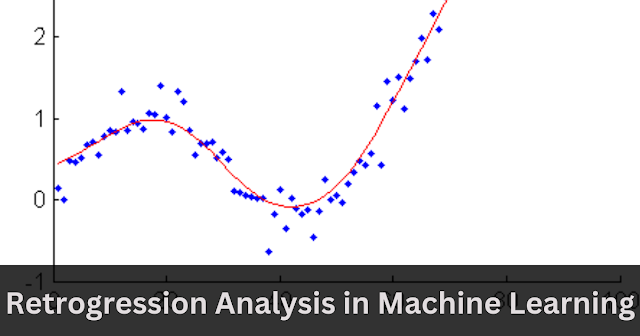1. Introduction
Artificial Intelligence (AI) has made significant strides in recent years, but one major hurdle remains: the need for large amounts of labeled data for training AI models. Labeled data, where each data point is annotated with the desired output, can be time-consuming and costly to acquire. However, researchers at the Massachusetts Institute of Technology (MIT) have made a breakthrough in unsupervised learning that has the potential to revolutionize AI training. In this article, we will explore MIT's breakthrough in scaling audio-visual learning without labels and the implications it holds for AI.
2. The Power of Audio-Visual Learning
Audio-visual learning refers to the process of training AI models using both visual and auditory data. By combining these two modalities, AI systems can extract meaningful information and learn richer representations of the world. This approach aligns with how humans perceive and understand the environment, making it a powerful tool for AI.
3. Limitations of Labeled Data
The traditional approach to training AI models involves using large labeled datasets. While effective, this method requires significant human effort and resources to annotate the data accurately. Scaling up this process becomes challenging and expensive, limiting the ability to train AI models on diverse and expansive datasets.
4. MIT's Breakthrough in Unsupervised Learning
Leveraging Audio-Visual Correspondence
MIT researchers have developed a novel approach to unsupervised learning that leverages the inherent relationship between audio and visual signals. By aligning audio and visual data from various sources, such as videos or recorded sounds, the AI system can learn to associate corresponding audio and visual elements without the need for explicit labeling.
Self-Supervised Learning Techniques
MIT's breakthrough relies on self-supervised learning techniques. Instead of relying on human-provided labels, the AI model generates its own pseudo-labels by predicting missing information in the data. This self-supervision allows the model to learn from vast amounts of unlabeled data and extract meaningful representations.
5. Implications for AI and Machine Learning
Enhanced Data Efficiency
By eliminating the reliance on labeled data, MIT's breakthrough significantly enhances data efficiency in AI training. This opens up opportunities for training models on large-scale datasets that were previously unfeasible due to labeling constraints. With more data available, AI models can learn more robust and accurate representations of the world.
Applications in Computer Vision and Audio Processing
Unsupervised audio-visual learning has implications for various fields, including computer vision and audio processing. AI systems trained on audio-visual data can better understand the context of images and videos, enabling more advanced tasks such as object recognition, scene understanding, and even lip-reading. In audio processing, AI models can learn to separate sounds from mixed audio sources or perform audio denoising.
Addressing Bias and Diversity
Another advantage of unsupervised learning is the potential to address bias and diversity issues. Labeled datasets often carry inherent biases, as they are influenced by the biases of the human annotators. Unsupervised learning allows AI models to learn directly from the raw data, potentially reducing biases and promoting more diverse and inclusive representations.
6. Challenges and Considerations
While MIT's breakthrough in unsupervised learning brings exciting possibilities, it also presents challenges and considerations.
Ethical Concerns
As AI systems become more sophisticated, ethical concerns surrounding their applications arise. Unsupervised learning should be guided by ethical principles to ensure responsible and unbiased use of the technology.
Privacy and Data Protection
The use of large-scale datasets raises concerns about privacy and data protection. Safeguards must be in place to ensure that personal information is not compromised during the training process and that the data used is obtained ethically and with consent.
Continual Learning and Adaptability
Unsupervised learning opens up opportunities for lifelong and continual learning. AI models can continuously learn from new data and adapt to changing environments. However, careful management of model updates and biases must be considered to ensure that the system remains reliable and fair.
7. The Future of Unsupervised Learning
MIT's breakthrough in scaling audio-visual learning without labels paves the way for exciting developments in unsupervised learning. Continued research and advancements in this field will lead to even more sophisticated AI models that can learn from vast amounts of unlabeled data, addressing challenges in data availability and labeling costs.
Conclusion
MIT's breakthrough in scaling audio-visual learning without labels represents a significant milestone in the field of AI. By leveraging audio-visual correspondence and self-supervised learning techniques, AI models can extract meaningful representations from vast amounts of unlabeled data. This breakthrough enhances data efficiency, opens up new applications in computer vision and audio processing, and addresses bias and diversity concerns. However, careful attention to ethical considerations, privacy protection, and continual learning is crucial for the responsible development and deployment of unsupervised learning systems.
FAQs (Frequently Asked Questions)
1. What is unsupervised learning?
Unsupervised learning is a machine learning approach where AI models learn from unlabeled data. Unlike supervised learning, which relies on labeled data with explicit desired outputs, unsupervised learning allows models to extract patterns and structures from the data without prior annotations.
2. How does MIT's breakthrough in unsupervised learning benefit AI training?
MIT's breakthrough eliminates the need for large amounts of labeled data, making AI training more efficient and scalable. It enables models to learn from unlabeled data using audio-visual correspondence and self-supervised learning techniques, leading to improved representations and expanded training possibilities.
3. What are the potential applications of unsupervised learning in AI?
Unsupervised learning has broad applications in AI, including computer vision, natural language processing, and audio processing. It enables AI models to learn directly from raw data, extract meaningful representations, and perform tasks such as image recognition, audio source separation, and language understanding.

.png)

.png)
.png)
.png)
.png)
0 Comments